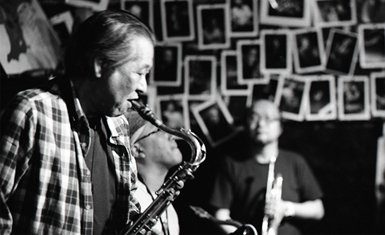Sexuality in Japan was once a very open topic. Contrary to what is generally thought, homosexuality did not occur exclusively in Europe, and certainly, in Japan, it was no exception. However, the expression of homosexuality in medieval Japan is different from the current conception.
Nanshoku
The term nanshoku (男 色) is usually mistranslated as “sodomy” or “pedophilia,” although neither term is accurate. This term refers specifically to homosexual behavior between men, never between women, and there is always a considerable age difference between the two people. This phenomenon was especially true among the samurai and monastic communities of pre-modern Japan.
Although this practice no longer exists in modern times and falls within the category of pedophilia, it presents a precedent in the history of homosexuality in Japan. Like a code, he nanshoku is significant today because it offers a reflection of the social order rather than a threat to it.
In other words, nanshoku is an extension of the social conventions imposed during the Tokugawa period that were fundamental to maintaining order. These social conventions were:
- Hierarchical relationships. Nanshoku was practiced among members of institutions based on loyalty, solidarity, and obedience. That is why this practice was presented both in monasteries and in the army, and it was seen as an extension of the relationship between the mentor and the ward and served to establish ties between both parties.
- Gender roles. Despite the fact that there was a homosexual relationship, a division was sought, in which the superior assumed the active role and the ward the passive role, with no possibility of change. Also, the ward sometimes dressed as a woman.
- Social structure. Nanshoku was practiced exclusively among the aristocratic class, especially among the feudal lords. When the merchant class emerged, this practice spread and popularized.
Nanshoku is also known as wakashudō (若 衆 道, Young man’s route), sometimes abbreviated as shudo. An anonymous writer from the 17th century writes about this practice:
It is natural for a samurai to make any effort to excel at the pen and sword. Furthermore, it is important for us not to forget, even in our last hour, the spirit of shudō. If we forgot, it would not be possible to maintain decency, or the gentleness of speech, or the refinements of polite demeanor.
The decline of this practice has more to do with the result of its spread to the merchant class than a moral issue. As a result of this spread, the practice led to an increase in the prostitution of young men, leading to a government ban on the practice.
Kagema

Another example of homosexuality in pre-modern Japan is the office of the kagema (陰間). By the Tokugawa era, kabuki theater was a popular form of entertainment, and the actors who participated in such plays became immensely popular.
However, there were other minor actors who alternated between acting and prostitution. They were known as kagema. This trade was on the rise as the merchant class was consolidated.
At other times, families would sell one of their young children to brothels or specialized tea houses, known as kagemajaya, where ten-year contracts were established. kagema sometimes imposed a woman in their services.
Homosexuality in contemporary Japan

With the modernization of Japan, homosexual practices were assimilated to align with western tradition. Although there are no laws against homosexuality, it is a sensitive issue in Japan today.
Homosexuals in Japan often seek to hide their identity, sometimes getting married to keep up appearances. Such is the case, for example, of the famous writer Yukio Mishima, who wrote a famous novel about it, entitled Confessions of a Mask.
On the other hand, in the media, there are people who have taken advantage of stereotypes of homosexuality to gain popularity, such as the comedian Masaki Sumitani or the fashion designer Hiromi. In popular culture, and especially in the anime and sleeve, New genres have been opened to capture this growing audience. Genres like him yaoi, yuri, and gei-comi deal with these issues. Meanwhile, yaoi and gei-comi are based on the erotic and physical aspects, the yuri is based on the emotional aspect.


